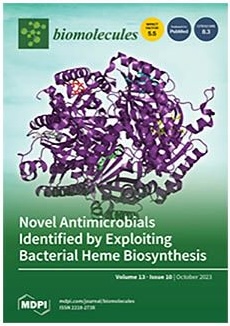
The final three steps of heme biogenesis exhibit notable differences between di- and mono-derm bacteria. The former employs the protoporphyrin-dependent (PPD) pathway, while the latter utilizes the more recently uncovered coproporphyrin-dependent (CPD) pathway. In order to devise a rapid screen for potential inhibitors that differentiate the two pathways, the genes associated with the protoporphyrin pathway in an Escherichia coli YFP strain were replaced with those for the CPD pathway from Staphylococcus aureus (SA) through a sliding modular gene replacement recombineering strategy to generate the E. coli strain Sa-CPD-YFP. Potential inhibitors that differentially target the pathways were identified by screening compound libraries against the YFP-producing Sa-CPD-YFP strain in comparison to a CFP-producing E. coli strain. Using a mixed strain assay, inhibitors targeting either the CPD or PPD heme pathways were identified through a decrease in one fluorescent signal but not the other. An initial screen identified both azole and prodigiosin-derived compounds that were shown to specifically target the CPD pathway and which led to the accumulation of coproheme, indicating that the main target of inhibition would appear to be the coproheme decarboxylase (ChdC) enzyme. In silico modeling highlighted that these inhibitors are able to bind within the active site of ChdC.

